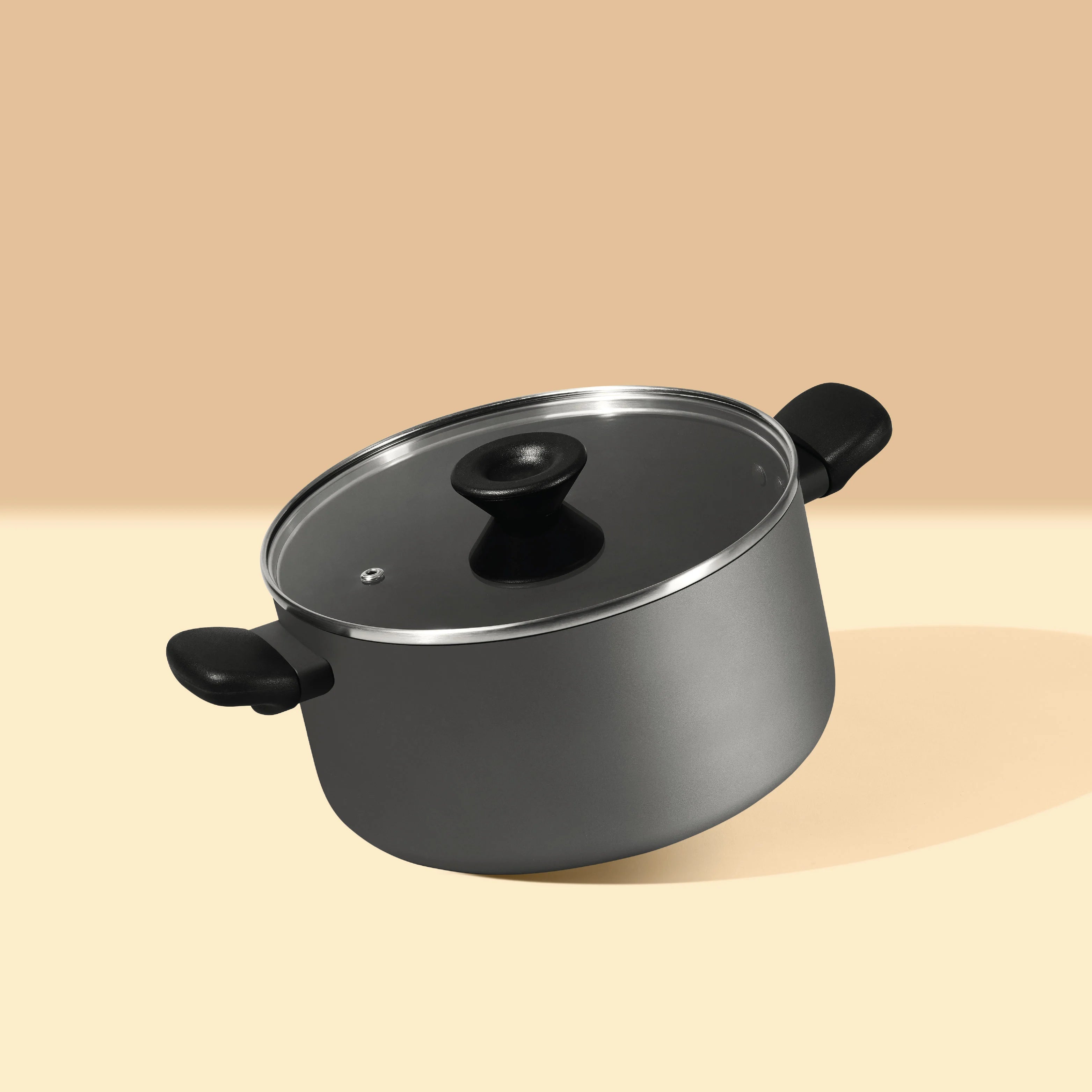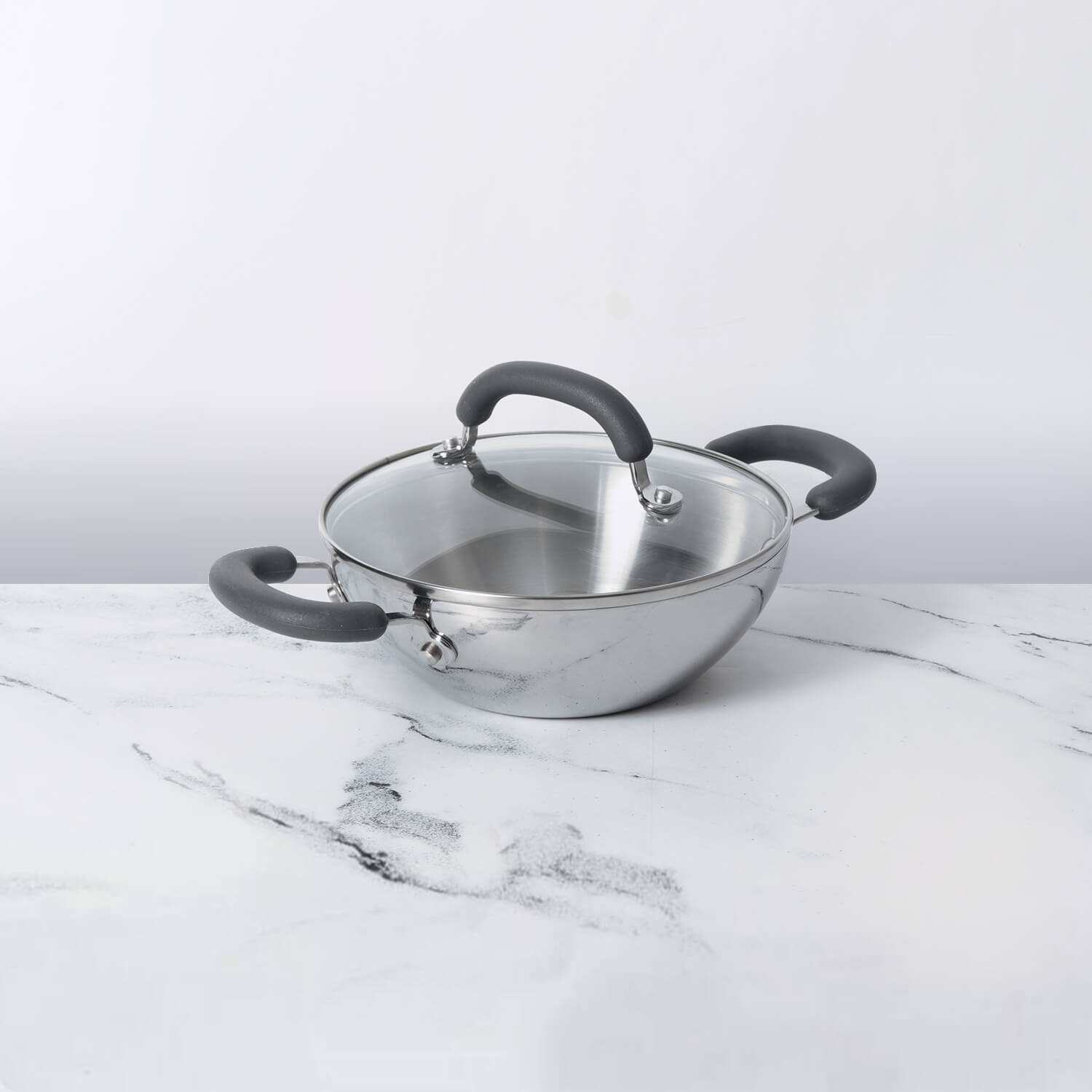Indian flatbreads like chapati, paratha, naan, and dosa hold a special place in culinary traditions. To achieve the perfect texture, flavor, and cooking efficiency, the tawa (griddle) you choose plays a vital role. Here's a detailed guide to understanding why selecting the right tawa matters, especially with modern cooking advancements in 2025.
Table of Contents
Material Matters
- Cast Iron Tawa: Known for excellent heat retention, cast iron ensures even cooking and imparts a rustic flavor to flatbreads. It is highly durable and, with proper care, can last for decades. Many modern cast iron tawas come pre-seasoned, saving time for users.
- Non-Stick Tawa: Ideal for low-oil cooking, non-stick tawas are perfect for health-conscious individuals. In 2025, advancements in non-stick coatings ensure they are PFOA-free and safe for daily use.
- Hard Anodized Tawa: Combining durability with ease of use, hard anodized tawas are lightweight and distribute heat evenly, reducing the chances of unevenly cooked breads.
- Stainless Steel Tawa: Perfect for high-heat cooking, stainless steel tawas are non-reactive and versatile. However, they may require a bit of oil to prevent sticking.
Size and Thickness
- The diameter and thickness of a tawa influence cooking efficiency.
- Small-sized tawas (8-10 inches) are ideal for personal portions or smaller breads like phulkas.
- Larger tawas (12-14 inches) are perfect for making parathas or dosas.
- A thicker tawa prevents hot spots, ensuring even browning of flatbreads and avoiding burning.
Flat or Concave Design
- Flat Tawas: Best for chapatis and parathas, as they offer a larger surface area for even cooking.
- Concave Tawas: Ideal for dosas or crepes as the design helps in spreading the batter thinly and evenly.
Compatibility with Modern Kitchens
- With the rise of induction stoves in 2025, it’s essential to choose an induction-compatible tawa. Many brands now offer tawas with multi-layered bases that work efficiently on induction, gas, and electric cooktops.
- Lightweight tawas with ergonomic handles are becoming increasingly popular for their ease of handling, especially in fast-paced kitchen environments.
Health and Eco-Friendliness
- Tawas made with eco-friendly and sustainable materials, such as hard anodized aluminum or naturally seasoned cast iron, are highly sought after.
- Non-toxic coatings are a must to ensure no harmful chemicals leach into food, making health a top priority.
Easy Maintenance
- Cast Iron: Requires regular seasoning to maintain its non-stick properties but offers unparalleled durability.
- Non-Stick: Easy to clean with minimal scrubbing but needs careful handling to avoid scratching the surface.
- Hard Anodized: A low-maintenance choice as it resists scratches and stains.
Modern Innovations
- Heat Indicators: Some tawas in 2025 now come with built-in heat indicators, ensuring the perfect temperature for flatbreads.
- Dual-Surface Tawas: One side for flatbreads and the other textured side for grilling, offering versatility in cooking.
- Eco-Coatings: Advanced non-stick coatings derived from natural materials for safe and sustainable cooking.
Modern Tawas for Indian Flatbreads
- Meyer Enamel Cast Iron Flat Dosa Tawa
- Features: Combines the durability of cast iron with a smooth enamel coating that eliminates the need for seasoning.
- Benefits: Effortless cleaning, even heat distribution, and rust resistance make it a favorite for dosa enthusiasts and roti lovers alike.
- Why It’s Perfect: Ideal for those who want the benefits of cast iron without the maintenance hassle.
- Meyer Pre-Seasoned Cast Iron Flat Dosa Tawa
- Features: Pre-seasoned for immediate use, this tawa offers natural non-stick properties.
- Benefits: Enhances flavor over time, ensures superior heat retention, and is perfect for achieving crispy dosas or evenly browned parathas.
- Why It’s Perfect: Great for traditionalists who appreciate authentic cast iron cooking.
- Meyer Pre-Seasoned Cast Iron Concave Tawa
- Features: A slightly concave design ensures better spreading of batter for dosas or crepes.
- Benefits: Helps achieve perfect paper-thin dosas with uniform browning.
- Why It’s Perfect: A go-to for dosa lovers and ideal for creating other flatbreads that require batter spreading.
Benefits of Using High-Quality Tawas in 2025
- Healthy Cooking: With options like pre-seasoned and enamel-coated cast iron, you can reduce oil usage without compromising on taste.
- Eco-Friendly: Durable materials like cast iron and enamel reduce waste by lasting for years.
- Enhanced Flavors: Cast iron tawas enhance the flavor of food over time, making them a chef’s favorite.
- Convenience: Modern tawas are compatible with induction, gas, and electric stoves, catering to the needs of contemporary kitchens.
Conclusion
Choosing the right tawa is essential for bringing out the best in Indian flatbreads. With advancements in cookware like Meyer’s innovative offerings, you can enjoy authentic flavors, healthier meals, and a seamless cooking experience. Invest in a tawa that matches your needs and elevate your culinary journey to a whole new level.












Leave a comment